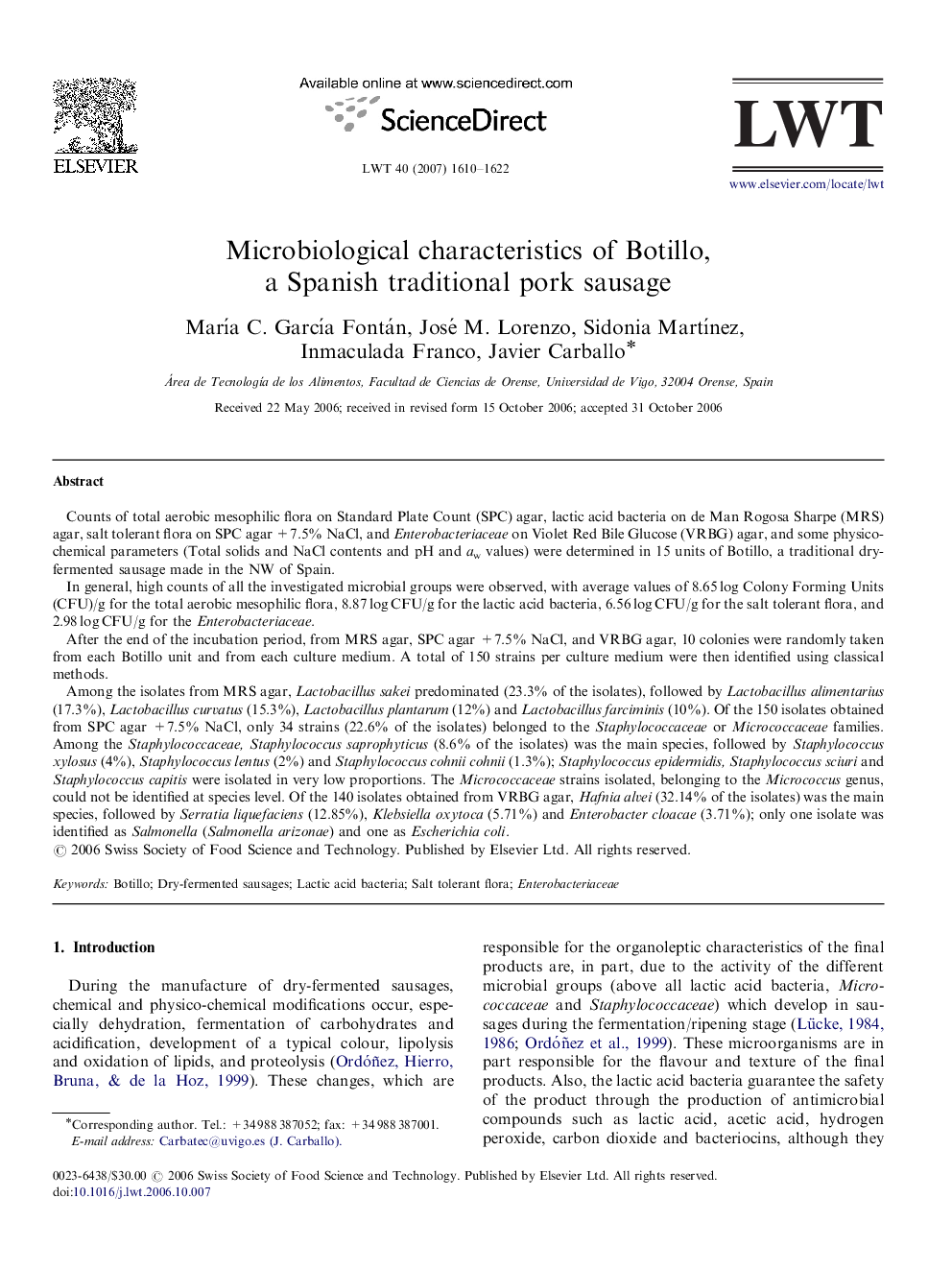| کد مقاله | کد نشریه | سال انتشار | مقاله انگلیسی | نسخه تمام متن |
|---|---|---|---|---|
| 4565214 | 1330962 | 2007 | 13 صفحه PDF | دانلود رایگان |

Counts of total aerobic mesophilic flora on Standard Plate Count (SPC) agar, lactic acid bacteria on de Man Rogosa Sharpe (MRS) agar, salt tolerant flora on SPC agar +7.5% NaCl, and Enterobacteriaceae on Violet Red Bile Glucose (VRBG) agar, and some physico-chemical parameters (Total solids and NaCl contents and pH and aw values) were determined in 15 units of Botillo, a traditional dry-fermented sausage made in the NW of Spain.In general, high counts of all the investigated microbial groups were observed, with average values of 8.65 log Colony Forming Units (CFU)/g for the total aerobic mesophilic flora, 8.87 log CFU/g for the lactic acid bacteria, 6.56 log CFU/g for the salt tolerant flora, and 2.98 log CFU/g for the Enterobacteriaceae.After the end of the incubation period, from MRS agar, SPC agar +7.5% NaCl, and VRBG agar, 10 colonies were randomly taken from each Botillo unit and from each culture medium. A total of 150 strains per culture medium were then identified using classical methods.Among the isolates from MRS agar, Lactobacillus sakei predominated (23.3% of the isolates), followed by Lactobacillus alimentarius (17.3%), Lactobacillus curvatus (15.3%), Lactobacillus plantarum (12%) and Lactobacillus farciminis (10%). Of the 150 isolates obtained from SPC agar +7.5% NaCl, only 34 strains (22.6% of the isolates) belonged to the Staphylococcaceae or Micrococcaceae families. Among the Staphylococcaceae, Staphylococcus saprophyticus (8.6% of the isolates) was the main species, followed by Staphylococcus xylosus (4%), Staphylococcus lentus (2%) and Staphylococcus cohnii cohnii (1.3%); Staphylococcus epidermidis, Staphylococcus sciuri and Staphylococcus capitis were isolated in very low proportions. The Micrococcaceae strains isolated, belonging to the Micrococcus genus, could not be identified at species level. Of the 140 isolates obtained from VRBG agar, Hafnia alvei (32.14% of the isolates) was the main species, followed by Serratia liquefaciens (12.85%), Klebsiella oxytoca (5.71%) and Enterobacter cloacae (3.71%); only one isolate was identified as Salmonella (Salmonella arizonae) and one as Escherichia coli.
Journal: LWT - Food Science and Technology - Volume 40, Issue 9, November 2007, Pages 1610–1622